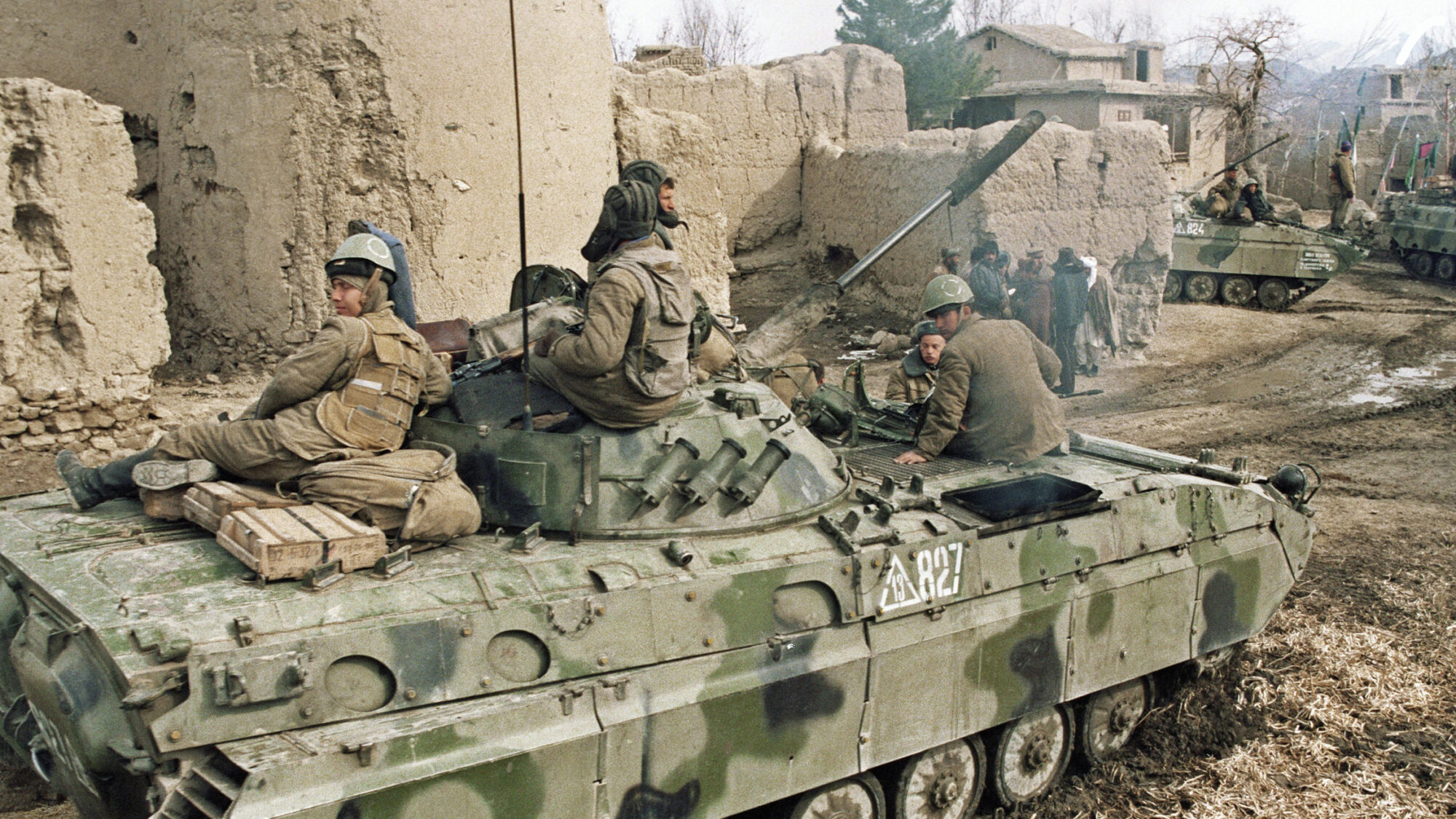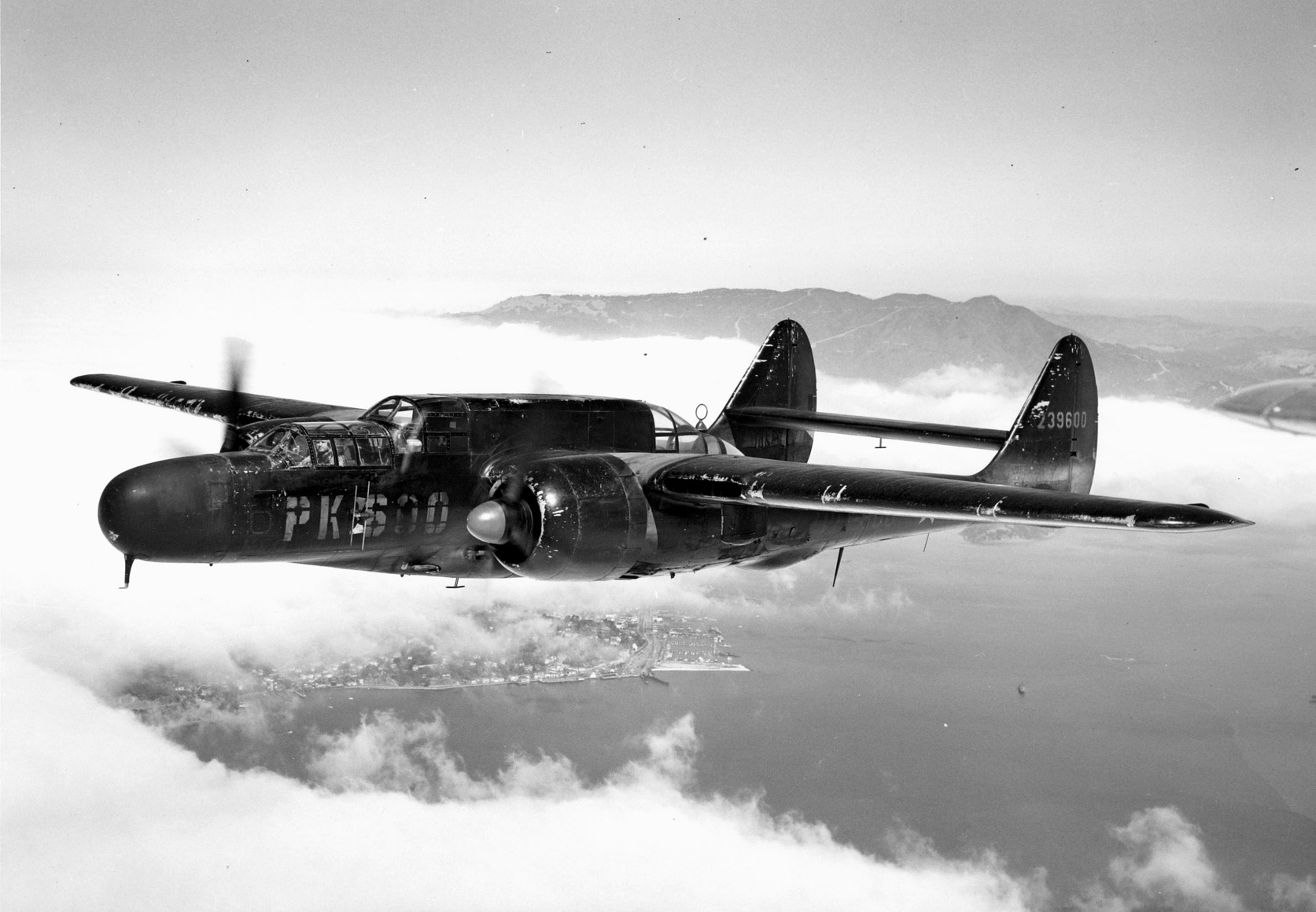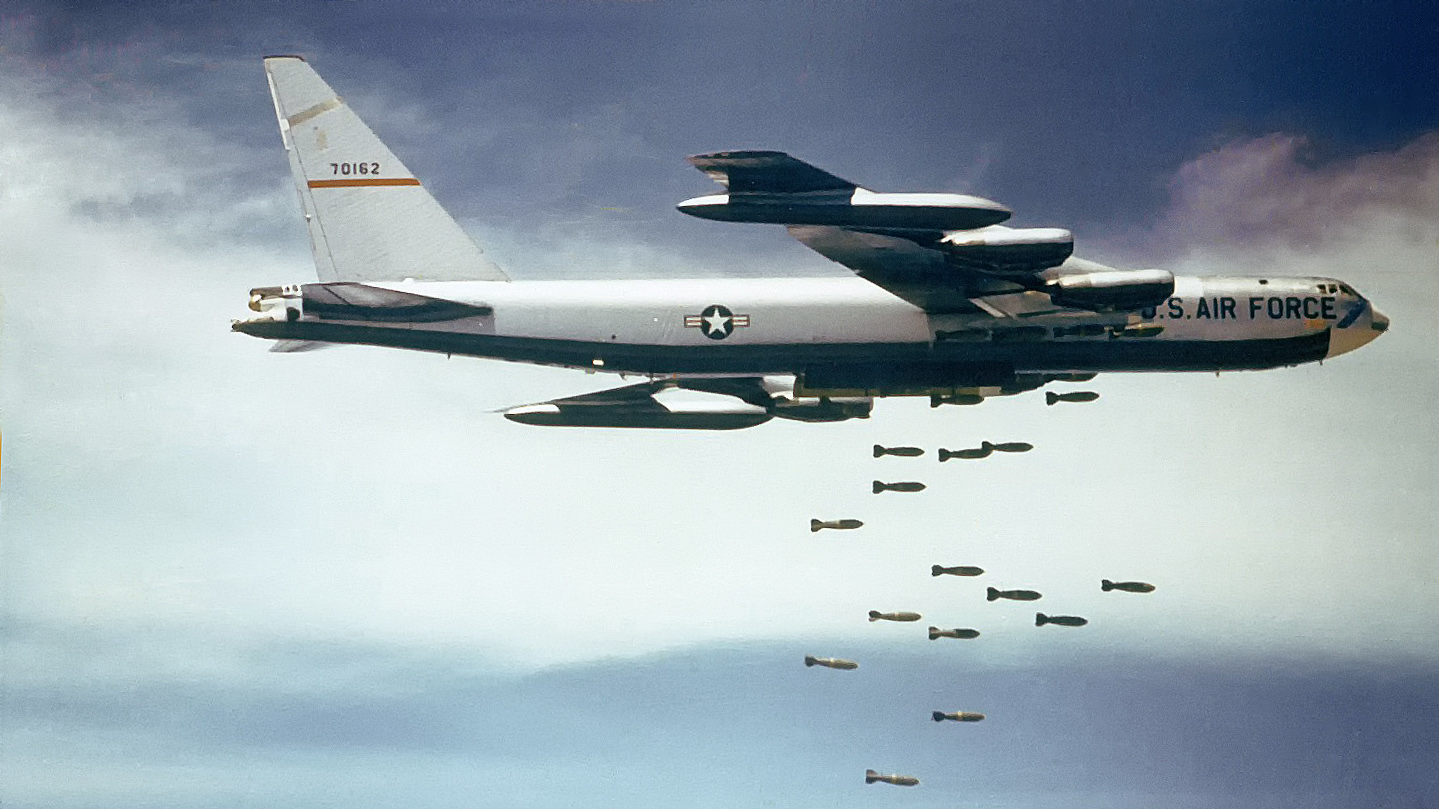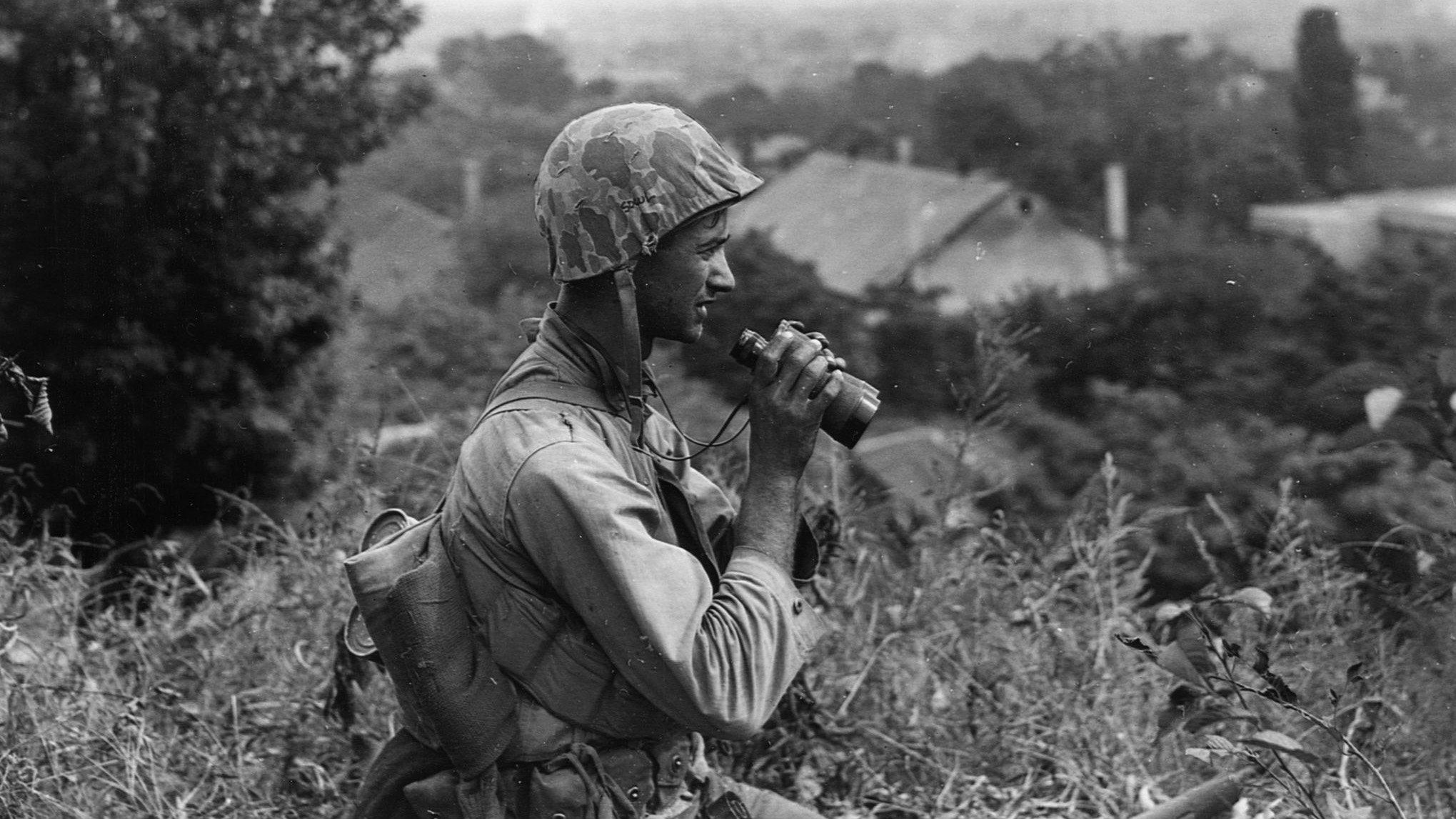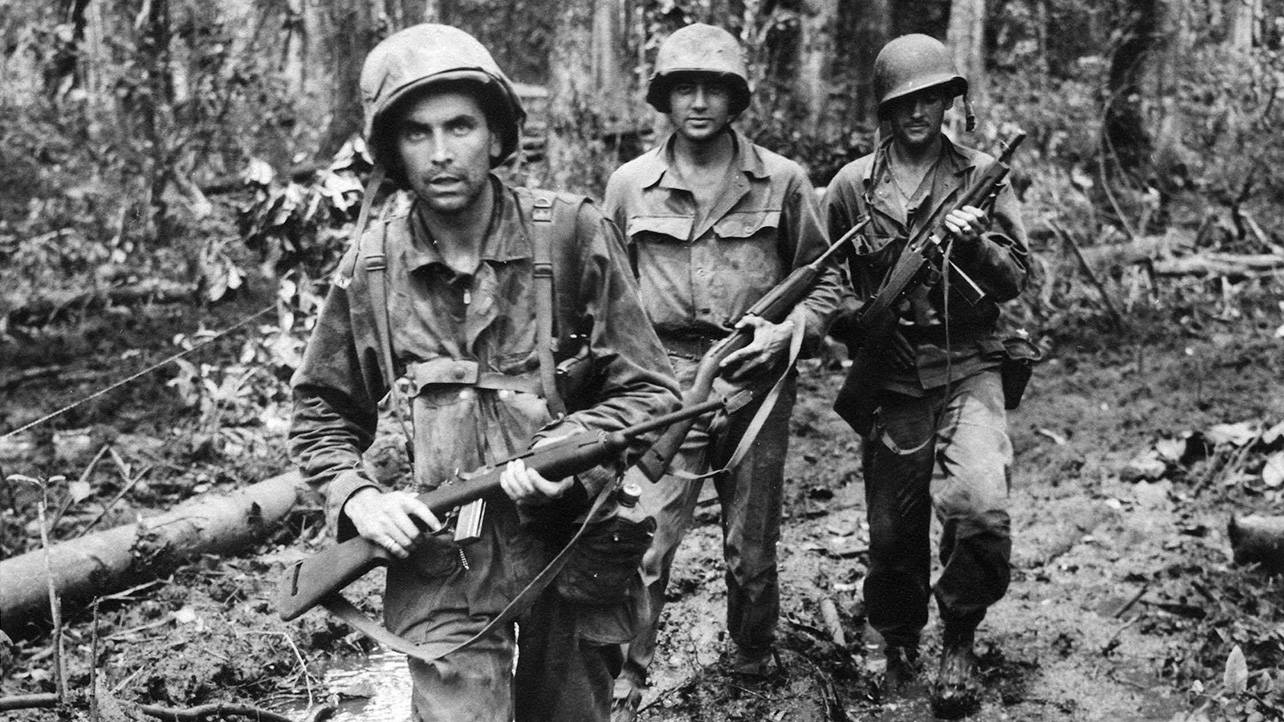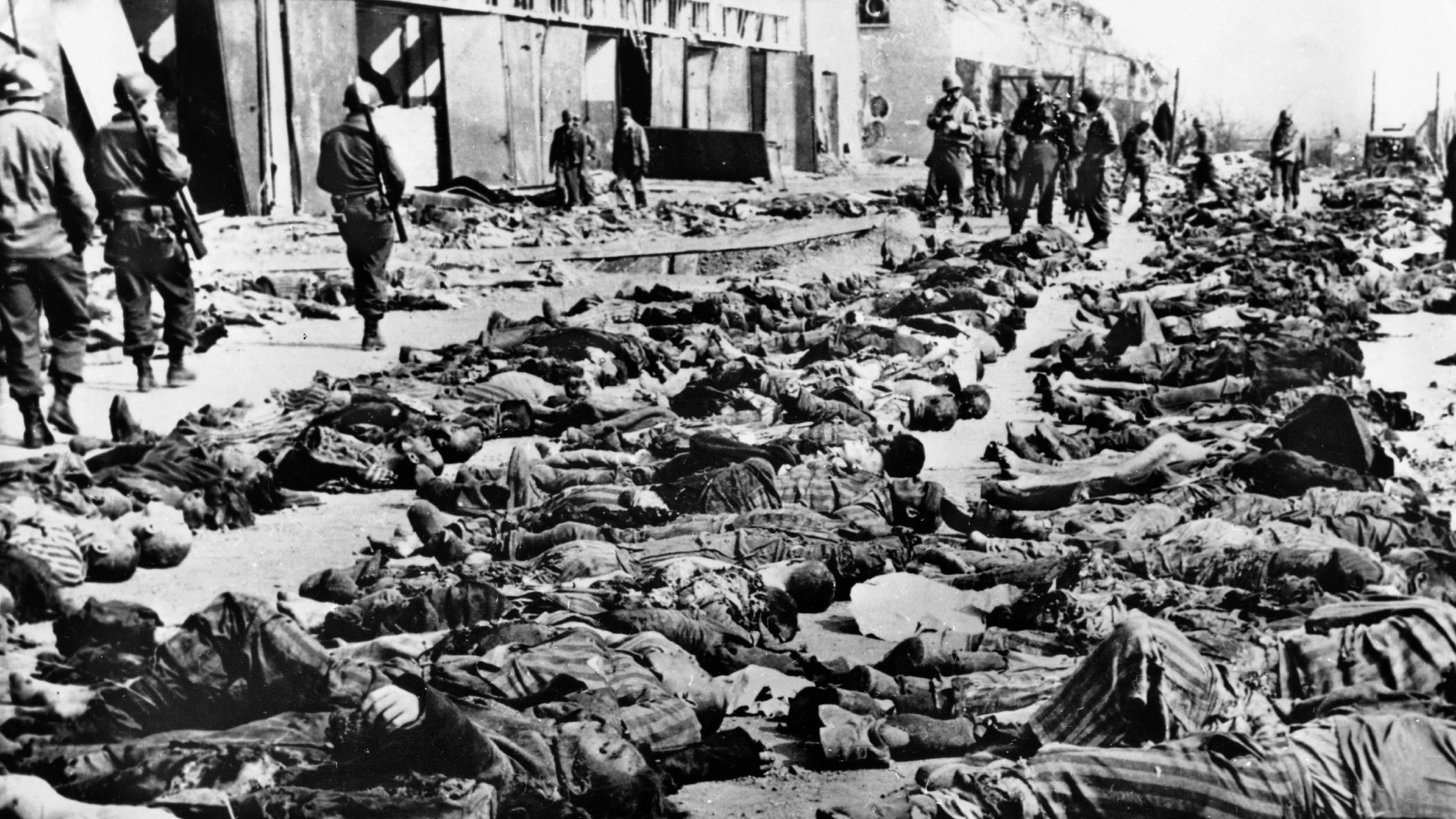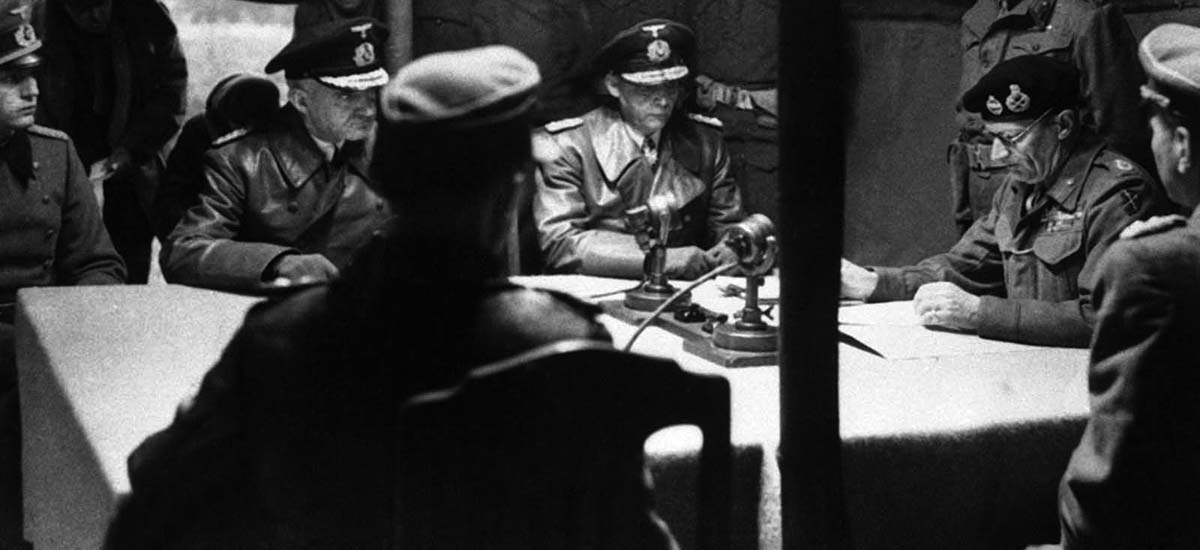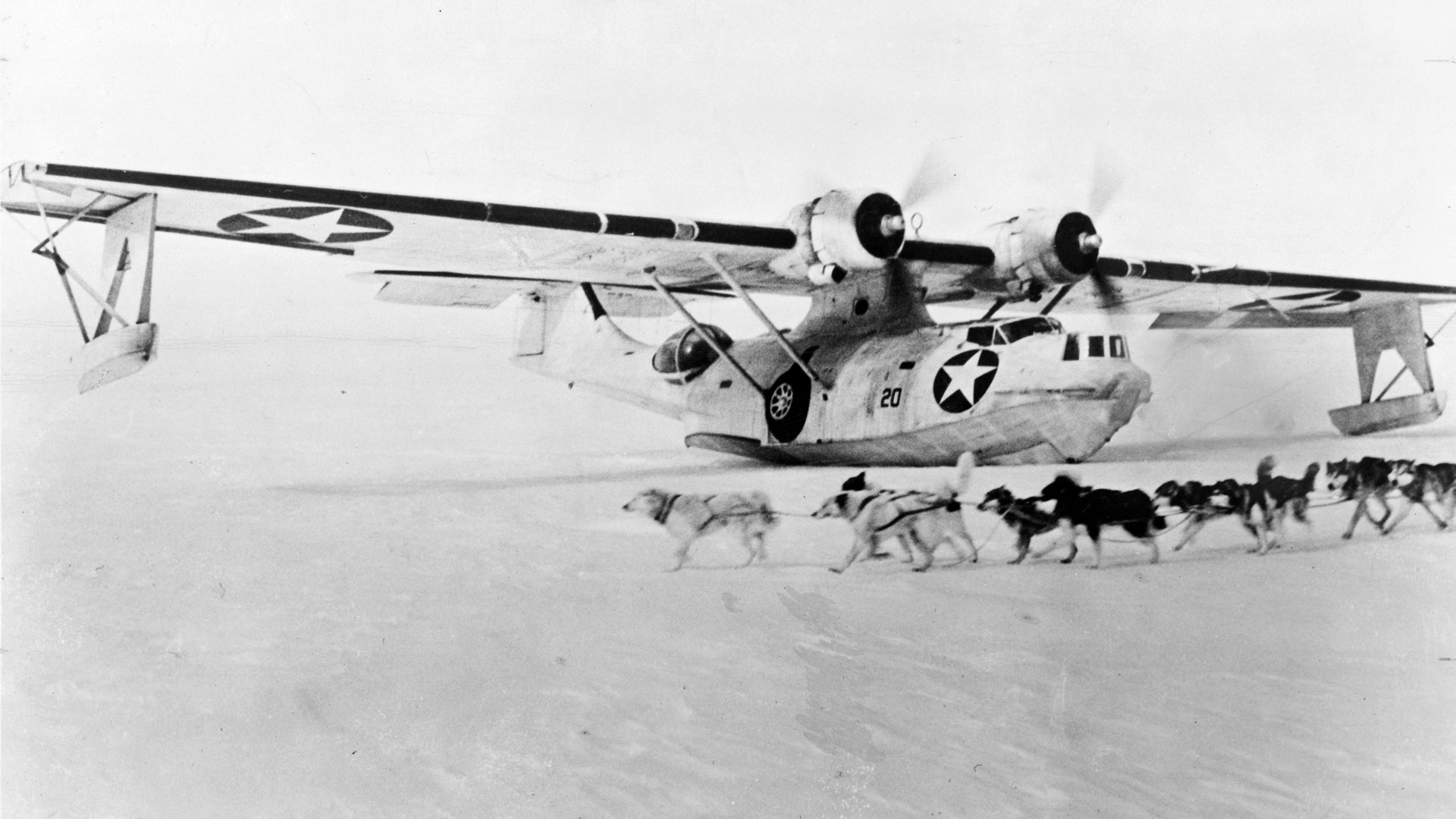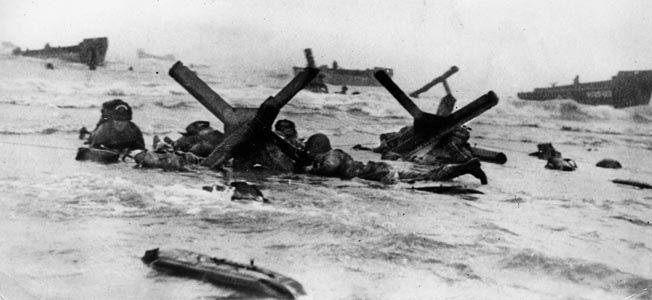By Christopher Miskimon
“If you are wounded, pretend to be dead; wait until the Germans come up; then select one of them and kill him! Kill him with gun, bayonet, or knife. Tear his throat with your teeth. Do not die without leaving behind you a German corpse.” Such orders were given to Red Army soldiers fighting the Germans in World War II, according to Marshal Nikolay Krylov, adding that the Russian soldier “loves a fight and scorns death.”
Russia is a nation tempered by war. The flames of conflict have shaped the country for centuries. Russia has no geographical features defining its borders, meaning its people have easily spread south and east over time; the government and army have naturally followed. This lack of a natural border also means Russia is vulnerable to invading armies and has indeed suffered invasion from both east and west. For this reason, the Russians sought to bring neighboring countries into their orbit in order to create a buffer space against their enemies.
Civil war erupted in 1917 as the Bolshevik Reds sought to overthrow the Czarist Whites and take control of Russia as the new Soviet Union. It was a chaotic time. Men flocked to each banner or simply threw away their weapons and tried to go home. If captured, a soldier might be offered the choice of execution or enlistment with their former opponents. While that bloody, brutal conflict dragged on, war broke out in Poland. The Red Army made a poor showing against the Poles, but by 1922, the last of the White forces were driven out of Russia.
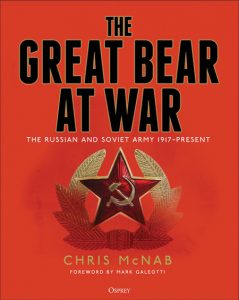 Through the 1930s the Red Army’s worst enemy was its own government. Purges stripped it of skilled leadership even as war clouds gathered to the west. Soviet and Japanese forces fought in Manchuria in the late 1930s. Their frontier battles climaxed in the Battle of Khalkhin Gol in 1939, in which Soviet forces defeated the Japanese in Mongolia. As Stalin sought more territory, war broke out again, this time with the small nation of Finland. The Soviets triumphed in the end, but suffered greatly during the war, taking heavy casualties. This was in large part due to the lack of leadership caused by the purges. The high command learned lessons but had little time to incorporate them; the Red Army was in poor condition for what came next.
Through the 1930s the Red Army’s worst enemy was its own government. Purges stripped it of skilled leadership even as war clouds gathered to the west. Soviet and Japanese forces fought in Manchuria in the late 1930s. Their frontier battles climaxed in the Battle of Khalkhin Gol in 1939, in which Soviet forces defeated the Japanese in Mongolia. As Stalin sought more territory, war broke out again, this time with the small nation of Finland. The Soviets triumphed in the end, but suffered greatly during the war, taking heavy casualties. This was in large part due to the lack of leadership caused by the purges. The high command learned lessons but had little time to incorporate them; the Red Army was in poor condition for what came next.
German leader Adolf Hitler unleashed Operation Barbarossa against the Soviet Union on June 22, 1941, with the German invasion. Despite the massive size of the Soviet military, it was pushed back in defeat, with millions of its soldiers killed or captured. Slowly, though, despite the desperate circumstances, the Soviets first held, and then started to push back the Axis armies on their soil. It was a grueling, costly effort, supported by Lend-Lease contributions from the Allies, but it was Soviet troops who paid the price to defeat Nazi Germany. Depictions of Soviet infantry bearing submachine guns and riding atop T-34 tanks are among the iconic images of the war.
During the Cold War, the Red Army clamped down on the Soviet Union’s Warsaw Pact client states. Red Army soldiers suppressed revolts in Hungary in 1956 and Czechoslovakia in 1968. The Red Army’s harshest test during this period came in Afghanistan, where they fought a bitter counterinsurgency war while the Soviet Union itself entered its death throes. Afghanistan ended in defeat, but it hardly mattered, as the nation that started that war ceased to exist soon afterward, becoming the nation of Russia once again. The dissolution of the Soviet Union led to a long conflict in Chechnya as Russia gradually rebuilt its army. In the 21st century, wars against Georgia and Ukraine have affirmed Russia’s status as a regional military power.
The story of the Russian and Soviet armies over the past 100 years is a fascinating one, replete with lessons and examples for students of history and followers of current events. The history of the Russian and Soviet Union armies is explored in great depth in The Great Bear at War: The Russian and Soviet Army 1917—Present (Chris McNab, Osprey Publishing, Oxford UK, 2019, 384 pp., maps, photographs, bibliography, index, $40.00, hardcover).
The level of detail in this book is impressive, ranging from the strategic decisions of high-ranking leaders to the everyday life of the Soviet soldier. It serves as an excellent primer on the Russian army and the experiences that shaped it. The book is also well illustrated, with both photographs from Russian archives and artwork depicting uniforms and equipment. It has everything a reader expects from an Osprey title: detail, visual representation, and compelling prose.
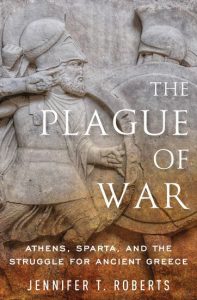 The Plague of War: Athens, Sparta, and the Struggle for Ancient Greece (Jennifer T. Roberts, Oxford University Press, Oxford UK, 2019, 416 pp., maps, photographs, notes, bibliography, index, $19.95, softcover)
The Plague of War: Athens, Sparta, and the Struggle for Ancient Greece (Jennifer T. Roberts, Oxford University Press, Oxford UK, 2019, 416 pp., maps, photographs, notes, bibliography, index, $19.95, softcover)
The rivalry between Athens and Sparta exploded into open warfare in 431 B.C. The struggle lasted more than a generation and involved new levels of barbarity. As the struggle went on, it consumed almost every aspect of life in Athens and stretched the gap between rich and poor in Sparta. This new account of the conflict extends beyond what many consider the traditional end of the war with Athenian defeat in 405. The author cogently argues that the fighting continued for decades, ending only in 371 at the Battle of Leuctra, when Theban infantry defeated the Spartans and ended the myth of their supremacy. This work covers not only the military aspects of the war, but also its effect on the Greek world as a whole.
 Legacies in Steel: Personalized and Historical German Military Edged Weapons, 1800–1990 (Hermann Hampe and Rick Dauzat, Casemate Publishers, Havertown PA, 2019, photographs, $200.00, hardcover)
Legacies in Steel: Personalized and Historical German Military Edged Weapons, 1800–1990 (Hermann Hampe and Rick Dauzat, Casemate Publishers, Havertown PA, 2019, photographs, $200.00, hardcover)
Swords and daggers have been dearly prized sidearms for centuries. They are symbolic of authority and leadership, holding onto this significance long after they ceased to be used as weapons on the battlefield. Some were made for a particular officer or non-commissioned officer. Many were issued, and yet others came into their owner’s possession through victory or plunder. They often have a history that bears true to the wars and events that occurred while the owner bore them. Some of the finest such weapons of the German military are exhibited in this new work. The weapons depicted are from museums and private collections, representing the finest examples in existence. Each weapon is presented in beautiful color photographs that are accompanied by text describing their origin, history, and ownership. This book is meant for serious collectors and historians, providing the high level of detail and photography required in an elegant layout.
 ‘They were Good Soldiers:’ African-Americans serving in the Continental Army, 1775-1783 (John U. Rees, Helion & Company, South Yorkshire, UK, 2019, 210 pp., maps, photographs, appendices, bibliography, $29.95, softcover)
‘They were Good Soldiers:’ African-Americans serving in the Continental Army, 1775-1783 (John U. Rees, Helion & Company, South Yorkshire, UK, 2019, 210 pp., maps, photographs, appendices, bibliography, $29.95, softcover)
African-American Private Cuff Whittemore fought in the militia at the Battle of Bunker Hill. An account stated he “fought bravely in the redoubt. He had a ball through his hat…fought to the last, and though wounded, the splendid arms of the British officers were prizes too tempting for him to come off empty handed; he seized the sword of one of them slain in the redoubt, and came off with the trophy.”
Nearby a white soldier named Smith fought at a rail fence, “a man at his side, a negro, so crippled by a shot in the leg that he could not rise up to discharge his gun, but he could load and re-load, which he continued to do, both Smith’s and his own, and then handed them to Smith to fire, until their ammunition was expended, when he undertook to carry the negro off the field on his back, but was obliged to leave him to his fate.” A total of 88 African-Americans fought at Bunker Hill.
The part of African-American soldiers in the Revolutionary War is not well known beyond the occasional mention of their presence. This book examines their service in great detail, including many personal narratives and descriptions. Their wartime duties and experiences are skillfully interspersed throughout the text. The book also looks at how black troops were treated by British forces and how all of them were treated after the war.
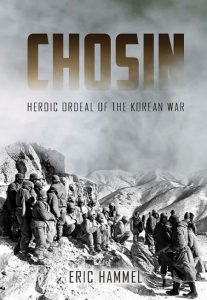 Chosin, Heroic Ordeal of the Korean War (Eric Hammel, Casemate Publishing, Havertown PA, 2019, 534 pp., maps, appendices, bibliography, $24.95, softcover)
Chosin, Heroic Ordeal of the Korean War (Eric Hammel, Casemate Publishing, Havertown PA, 2019, 534 pp., maps, appendices, bibliography, $24.95, softcover)
The Battle of Chosin started three hours before midnight on November 27, 1950, when the first Chinese probes made contact with the United States Marines. The Americans of 2nd Battalion, 5th Marines were on 50 percent alert: half of the men slept, while the other half stood guard. The Chinese came, throwing stick grenades and firing submachine guns while mortars threw their bombs in high arcs down onto the Marine positions. Sergeant Jim Mathews of Fox Company was stacking carbine ammunition in front of his foxhole in anticipation of combat when he saw a Chinese mortar crew setting up its weapon behind a pile of rocks. He called upon one of his 3.5-inch bazooka teams to fire at them, expecting they could at best keep the Chinese team distracted. Instead, the Marines’ first rocket slammed into the rocks, riddling the enemy soldiers with stones and shrapnel, killing all of them. A sniper shot Sergeant Mathews a few minutes later. Medics patched him up and sent him to the rear. The battle was only starting.
The author of this book has an established reputation as an authority on the U.S. Marine Corps, particularly small unit actions, and this book proves that expertise. While he relates the high-level decisions and errors that led to the Marines becoming overextended at Chosin, the real meat of this book are the stories of the men who fought in the foxholes and snow of a Korean winter. This book is a tribute to their dogged determination, courage and endurance.
 The Pope’s Army: The Papacy in Diplomacy and War (John Carr, Pen and Sword Publishing, South Yorkshire UK, 306 pp., photographs, notes, index, $39.95, hardcover)
The Pope’s Army: The Papacy in Diplomacy and War (John Carr, Pen and Sword Publishing, South Yorkshire UK, 306 pp., photographs, notes, index, $39.95, hardcover)
The Roman Catholic Church today is mainly a spiritual institution, but for many centuries it was a formidable political and military power. The period of Vatican martial prominence began around the year 410, when Pope Innocent I unsuccessfully tried to prevent the Sack of Rome by the attacking Visigoths. It didn’t fully end until 1870, when the French Army withdrew its protection from Pope Pius IX, compelling him to relinquish the Papacy’s remaining power to the new Italian state.
During that 1,400-year period, various Popes gradually built the power of the Church through both political machination and the raising of armies. During Europe’s religious wars, there was almost always a papal contingent involved. As Italian nationalists sought to unify the peninsula in the 19th century, papal volunteers from across Europe and the United States rallied to the Papacy’s ultimately futile cause.
European military histories often mention the Papacy as a force in many of the continent’s wars, particularly in the Middle Ages. This new book takes the novel approach of concentrating on the Popes and their military endeavors. The author effectively highlights the close involvement of the church in the intertwined political and military events of Europe over the course of centuries.
 Ambush Valley: I Corps, Vietnam 1967 – The Story of a Marine Infantry Battalion’s Battle for Survival (Eric Hammel, Casemate Publishers, Havertown PA, 2019, maps, bibliography, 22.95, softcover)
Ambush Valley: I Corps, Vietnam 1967 – The Story of a Marine Infantry Battalion’s Battle for Survival (Eric Hammel, Casemate Publishers, Havertown PA, 2019, maps, bibliography, 22.95, softcover)
In summer 1967, the American base at Con Thien was under siege by the North Vietnamese Army. Located along the Demilitarized Zone in South Vietnam, the Marine Corps base played a crucial role in preventing North Vietnamese troops from infiltrating into South Vietnam.
The Marine Corps senior command dispatched the 3rd Battalion, 26th Marines to the area to secure the main supply route leading to the base. On the unit’s first full day in the area of operations, September 7, 1967, at least two battalions of North Vietnamese infantry attacked separate parts of the Marine battalion. Three days later, an entire regiment assaulted the Marines, who became isolated in two different defensive perimeters. The Americans held out against repeated waves of enemy soldiers, who were determined to annihilate the Marines. The Marines won the battle by a narrow margin; they described the battle as “Custer’s Last Stand—With Air Support.” The Marines prevailed only by the slimmest of margins.
This rapid-fire narrative of the battle relies heavily on eyewitness accounts. Each Marine’s account is presented in a chronological fashion, weaved together to cover the major events and fighting of the engagement. It is a vivid oral history of a relatively unknown battle that rivals better-known combat actions such as the Ia Drang Valley in intensity and bravery. The book dramatically relates the experiences of a Marine infantry battalion embroiled in a fight for survival.
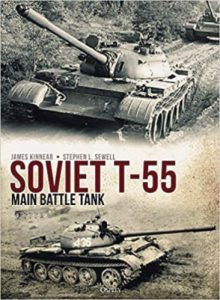 Soviet T-55 Main Battle Tank (James Kinnear and Stephen Sewell, Osprey Publishing, Oxford UK, 2019, 192 pp., photographs, appendices, bibliography, index, $40.00, hardcover)
Soviet T-55 Main Battle Tank (James Kinnear and Stephen Sewell, Osprey Publishing, Oxford UK, 2019, 192 pp., photographs, appendices, bibliography, index, $40.00, hardcover)
Some weapons are so widely used they become almost ubiquitous examples of their type. The T-55 tank is one such weapon. Based on designs that originated during World War II, this Soviet armored vehicle was an improved version of the T-54 design and quickly became a standard of the Cold War era. In the late 1950s, it was the newest Soviet tank design. It was compact, heavily armored, and equipped with a powerful 100mm cannon.
The Soviets quickly exported the design, equipping the various nations of the Warsaw Pact as well as other Soviet client states, particularly in the Middle East. The Soviets built 23,000 T-55s, while the Poles and Czechs built another 15,000. Thousands of derivatives were built in China as well, making this one of the most-produced tanks of the Cold War era.
This book contains a wealth of technical and development data on the T-55. The tank went through various upgrades and design changes throughout its production, and the authors have carefully compiled data on each variation. The numerous variants of the tank, such as bridge-layers and mine-clearing vehicles used by combat engineers, also receive great detail. The book is lavishly illustrated with photographs, design drawings, and a thorough set of appendices laying out its production and service life.
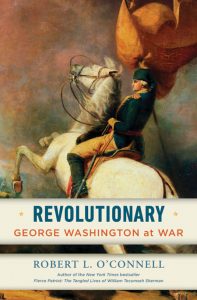 Revolutionary: George Washington at War (Robert L. O’Connell, Random House Publishers, New York NY, 2019, 368 pp., maps, photographs, notes, bibliography, index, $32.00, hardcover)
Revolutionary: George Washington at War (Robert L. O’Connell, Random House Publishers, New York NY, 2019, 368 pp., maps, photographs, notes, bibliography, index, $32.00, hardcover)
In his youth, George Washington was a frustrated and vain Virginia aristocrat who lusted for glory and advancement. His initial actions in the French and Indian War, such as the debacle at Fort Necessity in 1754, resulted in setbacks for American colonial forces. However, he ultimately learned from such mistakes. After the war, he became involved in politics and saw first-hand how the British injustices had an adverse influence on life in the Thirteen Colonies.
When the American Revolution began, he proved the best man for the task of leading the Continental Army. He realized the utter necessity of keeping the army intact and alive despite battlefield defeats. The Revolution, he knew, stayed alive as long as it had an army in the field. Washington proved equally adept at limiting the violence and paranoia of the time, understanding such excesses were unhealthy in the long term. Washington was truly one of history’s rare indispensable men.
Books about George Washington abound. What makes this new work stand out is the author’s conversational style, as well as his ability to relate the complex, often paranoid world his subject had to navigate. He argues the Revolutionary period was full of conspiracy theories that Washington learned to manipulate and control to benefit the new nation. The book also examines Washington as a young man, revealing his formative experiences.
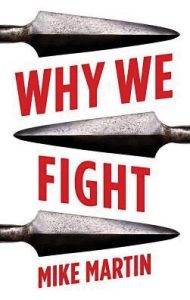 Short Bursts
Short Bursts
Why We Fight (Mike Martin, Hurst and Company, 2019, $29.95 hardcover. An in-depth study of why human beings engage in conflict, from the interpersonal up to world wars. The author argues that while religion and morality are often blamed for war, they actually more often reduce it.
Napoleon’s Imperial Guard: The Infantry – Uniforms and Equipment (Paul L. Dawson, Frontline Books, 2019, $60.00, hardcover). The Napoleonic French Army fielded numerous regiments wearing a wide variety of uniforms and equipment. This volume details the various clothing and accoutrements the soldiers wore.
War Amongst the Clouds: My Flying Experiences in World War I and the Follow-On Years (Air Vice-Marshal Hugh Granville White, Grub Street, 2019, $34.95, hardcover). The author served in the Royal Air Force from World War I until 1955. This memoir recounts an active career across war and peace.
The Berlin Airlift: The World’s Largest-Ever Air Supply Operation (John Grehan, Pen and Sword, 2019, $24.95, softcover). The Berlin Airlift was one of the first crises of the Cold War. This photo book shows the events in detail, accompanied by interesting text.
Walking Verdun: A Guide to the Battlefield (Christina Holstein, Pen and Sword, 2019, $19.95, softcover). This tour book contains a thorough history of the infamous World War I battle. It is well-illustrated and has numerous maps.
Major General George H. Sharpe and the Creation of American Military Intelligence in the Civil War (Peter G. Tsouras, Casemate Publishing, 2018, $34.95, hardcover). Maj. Gen. George H. Sharpe was the first American to build a professional all-source intelligence service. This book tells both his story and that of the U.S. intelligence service’s creation.
 Raising the White Flag: How Surrender Defined the American Civil War (David Silkenat, University of North Carolina Press, 2019, $39.95, hardcover). Roughly one in four soldiers surrendered at some point during the war. This is a comprehensive study of that phenomenon.
Raising the White Flag: How Surrender Defined the American Civil War (David Silkenat, University of North Carolina Press, 2019, $39.95, hardcover). Roughly one in four soldiers surrendered at some point during the war. This is a comprehensive study of that phenomenon.
US Navy Battleships 1886-98: The Pre-Dreadnoughts and monitors that Fought the Spanish-American War (Brian Herder, Osprey Publishing, 2019, $19.00, softcover). The U.S. Navy experienced a vast recapitalization in the last decades of the 19th century. This book details how the fleet grew into a war-winning force.
French Battleships 1914-45 (Ryan K. Noppen, Osprey Publishing, 2019, $19.00, softcover). This history of France’s 20th century battleships is well-illustrated with original artwork and photographs. The text is detailed and describes the ship’s technical and operational histories.
Churchill’s Abandoned Prisoners: The British Soldiers Deceived in the Russian Civil War (Rupert Wieloch, Casemate Publishing, 2019, $32.95, hardcover). This is the story of 15 British soldiers abandoned by their government during the Russian Civil War. They suffered a harrowing ordeal in captivity.
Images of War: M-1 Abrams (David Doyle, Pen and Sword, 2019, $24.95, softcover). The Abrams has formed the backbone of American armor since the 1980s. This book shows the tank in detail, with many photos of use to modelers and artists.
